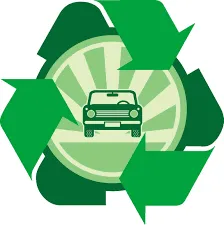News Details

Regulation proposal on the management of end-of-life vehicles and standards for circularity in vehicle design.
The European Commission adopted a Proposal for a Regulation on the management of end-of-life vehicles and standards for circularity in vehicle design on July 13, 2023. The adopted act is open for feedback until September 26, 2023.
In terms of reusability, recyclability, and recoverability of materials used in vehicles, as well as information and labelling requirements for parts, components, and materials used in vehicles, this proposed regulation establishes circularity requirements. It also specifies rules for extended producer responsibility, the collecting and disposal of vehicles at the end of their useful lives, and the export of old cars from the Union to foreign nations.
In Europe, more than six million vehicles approach the end of their useful lives each year. Poor handling of cars near the end of their useful lives causes pollution and value loss. The evaluation of the existing EU laws governing the area, Directive 2000/53/EC on end-of-life vehicles (the "ELV Directive," adopted in 2000), and Directive 2005/64/EC on the type-approval of motor vehicles with regard to their reusability, recyclability, and recoverability ("3R type-approval Directive," adopted in 2005), has revealed that significant improvements were required to boost the transition of the automotive sector to a circular economy and thereby reducing the amount of waste that is produced.
The transition to zero-emission vehicles depends on strengthening the EU's resilience against supply chain disruptions and lowering its reliance on imports of vital raw materials. To help the industry adapt, the Commission has updated the law and suggests a single regulation that emphasises a number of crucial components to raise design, collection, and recycling quality while simplifying reporting requirements:
|
1. |
Design Circular |
Increasing circularity in vehicle design and manufacturing will help to ensure that these can be easily dismantled. |
|
2. |
Use recycled content |
It will be necessary for 25% of the plastic used to construct a new car to be recycled. |
|
3. |
Treat Better |
The actions will result in the recovery of more raw materials of higher quality, including crucial raw materials, plastics, steel, and aluminium. End-of-life vehicle plastics should be recycled to an extent of 30%. |
|
4. |
Improve governance |
By creating national Extended Producer Responsibility programmes with standardised standards, the new regulations will strengthen producer responsibility. |
|
5. |
Collect more and smarter |
This entails more inspections, digital tracking of end-of-life vehicles across the EU, improved separation of old vehicles from end-of-life vehicles, increased fines for infractions, and a restriction on exporting used vehicles that are not roadworthy. |
|
6. |
Cover more vehicles |
To provide more thorough coverage, the reach of these measures will be gradually increased to encompass new categories including motorbikes, trucks, and buses. |
This action plan is anticipated to provide significant environmental advantages, such as:
-
A decrease in yearly CO2 emissions of 12.3 million tonnes by 2035
-
Improved material valorisation of 5.4 million tonnes
-
Higher recovery of essential raw materials
-
Long-term energy savings at the production stage and a decrease in reliance on imported raw materials.
The European Parliament and the Council will now review the Commission's proposal for a rule on the management of end-of-life vehicles and on circularity standards for vehicle design.
We acknowledge that the above information has been compiled from Europe.


